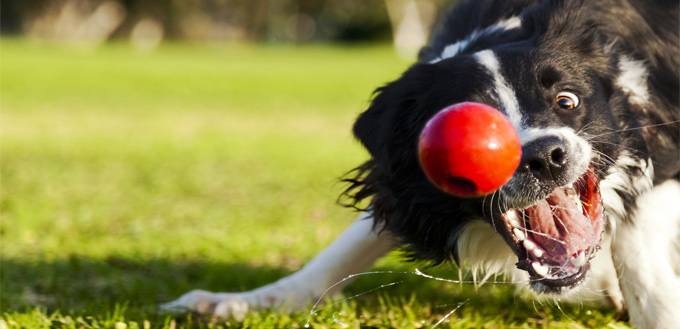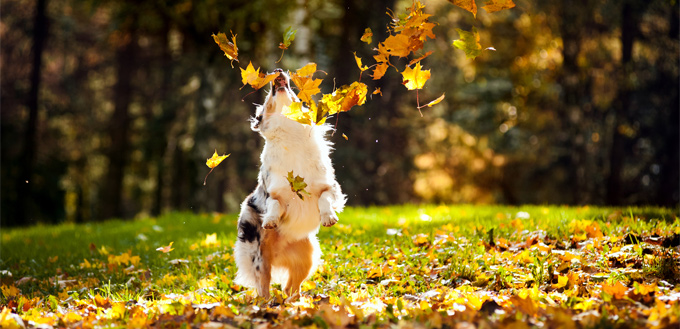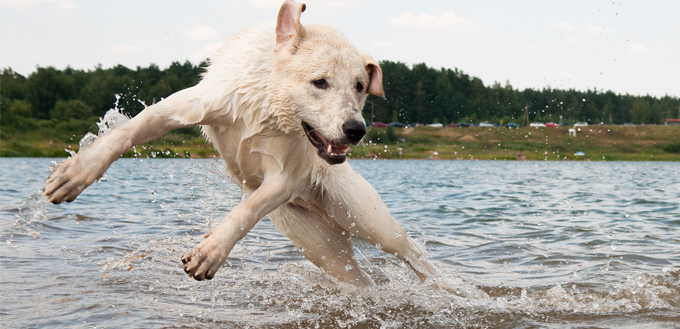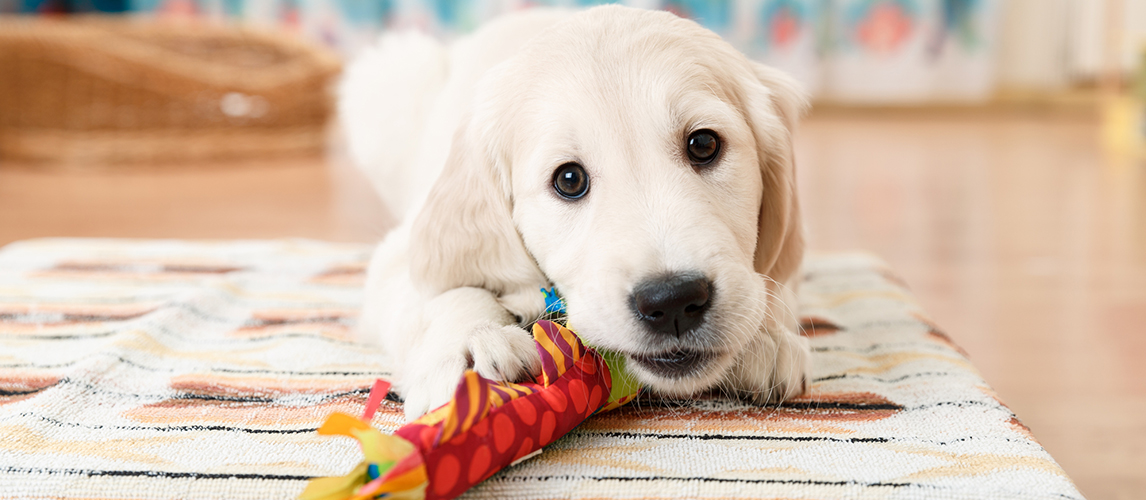Dogs are like human beings in many ways, and this is partly why we bond so closely with them. One of the common things that make them similar to us in their mood swings. The only difference being they can get more physical than us.
Most pet owners have seen this in their pets. One moment their pets are calm and relaxed and the next moment, they run around with a crazy amount of energy as if someone just turned on a switch in them.
Though it may seem unnatural and even scary for pet owners, these dog zoomies are fairly normal and happen often.
Curious as to why these zoomies happen? What triggers them? Let’s get answers to these questions and more in this article.

What are Dog Zoomies?
Zoomies is a word used in the causal sense, but the real term for this behavior is called Frenetic Random Activity period (FRAP). According to some of the well-known veterinarians, this is nothing but a release of energy that has built up over some time. In fact, they recommend that there is nothing to be worried about FRAPS and it will end in a few minutes. The dog will be normal again, and for the most part, there is nothing wrong with its health.
Why do Dogs Get These Zoomies?
There is no scientific explanation as to why zoomies happen, though an accepted fact is that zoomies are a release of energy that has been building up in your dog over the last few hours.
Every breed has different energy and activity levels, so lazy breeds tend to have much lesser occurrences of zoomies when compared to the more active dogs.
Now, this explanation brings up an interesting question. Is there a specific trigger for these zoomies? Do zoomies happen when you return home from work or any other specific situation?
Well, it is hard to say. Every dog reacts differently to their built-up energy. In the wild, dogs had a lot of energy because they had to actively hunt for food and protect itself from predators. But after domestication, dogs do not have to worry about both these aspects, so the release of energy is much slower. Nevertheless, energy piles up in its body and physiologically, it is forced to expend it at some point in time.
The exact timing when the dog expends this energy varies from dog to dog. Some dogs get excited really fast. For such dogs, zoomies may happen when they meet another dog, another new human being when you take them to the vet or even when you take your dog to the park to play. In the case of more laid-back dogs, seeing other animals or human beings play can trigger zoomies.
There is no specific pattern, even for the same dog, though they may get excited in similar situations. In other words, if your dog gets excited about seeing a new dog, it will get excited when it sees a new dog every single time. But every time, the dog may not get zoomies. It just depends on the mood and the amount of stored up energy levels.
Some researchers believe that dogs get zoomies as a form of stress relief. Let’s say, you take your dog to the vet to get his shots. Once out of the vet’s office, your dog may get zoomies. This is just a form of expression of relief and happiness to get away from an uncomfortable place or situation. In many ways, it is like a young child that gets excited when there is a snow holiday or when exams are over. Dogs react in the same way too.
Do all Dog Breeds Get Zoomies?
Yes, all dog breeds get zoomies, but the frequency may vary from breed to breed. Some active breeds tend to get zoomies more often, especially if they are forced to live a sedentary life. On the other hand, less active dogs will have lesser instances of zoomies because genetically they do not pile up a lot of energy in their body.
That said, zoomies happen in all dog breeds, regardless of their size, features or any other aspect.
One exception to this rule is puppies. Generally speaking, puppies that are only weeks old will not get zoomies because they neither have the physical strength nor the motor skills to quickly get up and have a mad dash. But once they get a little older and start to gain some strength, you can see zoomies in these puppies as well.
You can see zoomies in seniors too if they still have the mobility to run around. In fact, zoomies indicate that your dog is in good health as they are able to build up energy and move to expend it.
A sick dog can never get zoomies because all the energy in the body goes towards fixing whatever is affecting the dog. Veterinarians opine that it is almost impossible to see zoomies in sick dogs.
So, pet owners, don’t worry! Zoomies indicate that your dog is in good health.

Are Zoomies Dangerous?
Zoomies are not dangerous from the health perspective of your dog. But they are definitely dangerous in the sense that it can greatly increase the chances of an accident.
When your dog darts without any sense of direction, it can bang itself against some object or worse, even trip downstairs. In that moment of a mad rush, dogs do not seem to have an awareness of their environment and this could lead to accidents.
It is also dangerous when dogs get zoomies while you’re taking them for a walk. This sudden surge of energy will catch you unawares and this can cause the dog to bolt away from the leash. This is a problem if you’re walking on the street as nearby drivers may not have the reflex to apply the brake if your dog decides to run across the street. And all this greatly increases the chances of a fatal accident.
Another associated problem that could come with zoomies is harm to others. When your dog gets a sudden surge of energy, what if it runs and bites the young girl playing in the park? That’s a liability that you sure want to avoid.
So, zoomies are not dangerous from a health perspective but could end up in accidents, sometimes severe and fatal too.
This brings up the question of what you should do in such cases. Read on to understand.
How to Stop Dog Zoomies?
Zoomies are a normal occurrence and there is not much you can do to stop it altogether. But what you can do is to ensure that your dog lets out its energy in a phased manner, so the energy does not get accumulated, thereby forcing the dog to have zoomies.
Here are some things you can do to reduce the occurrence of zoomies
Have a Routine
To this end, establish a routine and more importantly, stick to it. If you plan to take your dog out for a walk at 5AM every day, make sure you do it. No changing time to meet your convenience. You can’t take your dog at 5AM on one day and 2 PM on the next because your dog’s physiology will get confused.
Think of this as something similar to a weight loss routine. Let’s say you plan to have your first meal at 8AM, second meal at 12PM, third one at 4PM and the last one at 8PM. When you follow this routine, your body adapts to expect food at this time and this will ensure that your hunger pangs and sugar levels are in check. Now what happens when you have food at random times every day? You’ll crave more food, you’ll tend to put on weight and overall, your body’s mechanism goes out of whack.
The same applies to your dogs too. Establish a routine and follow it regularly.
You don’t necessarily have to choose 5AM if you can’t keep it up. Choose 9AM or even 6PM, it is up to you. But stick to it, as that is more important.
Exercise
Lack of physical activity greatly increases the chances for zoomies. So, give enough physical exercise to your dog for all the energy to be drained out. This doesn’t mean you have to overwork your dog, but at the same time, give it good exercise.
Now, what is the correct amount of exercise? Well, it depends on your breed and your dog in specific. Some dogs may require about 20 hours of exercise in a week, while others may get tired with just five. Work with your dog and understand what is the optimal level of exercise for it.
To some extent, the optimal level will also depend on the nature of the exercise. Like human children, dogs may also tend to get bored with drills and the same set of exercises.
So, you may have to mix and match just like what you do to keep yourself fit. Run with your dog one day, play ball on the next day, go for a long walk on the third day and so on. Introduce variety so your dog looks forward to this exercise time and enjoys it too.
Above everything, this kind of exercise is sure to provide lots of opportunities for you to bond with your dog. After all, you may be able to spend a ton of time after missing out on all these years, just because you either didn’t know what to do or couldn’t find time for it!
Talk to Your Vet
If you can’t come up with the right mix of exercises or if your dog doesn’t seem to be too interested in physical activity, talk to your vet.
The vet may be able to give you more suggestions on how to get your dog active. Also, inactivity could possibly be due to some kind of illness or discomfort. Your vet can get to the bottom of it and check if everything is fine with your dog. She/he may even be able to give you an idea of the optimal level of activity for your breed.
So, if you run out of ideas, reach out to your vet to help you.
Create a Safe Environment
It is always a good idea to create a safe environment for your dog, so you don’t have to worry too much when your dog gets zoomies. Make sure your dog doesn’t spend too much time near breakable or areas where accidents are likely. Allow your dog to spend most part in carpeted floors or in a fenced yard, so nothing can harm the dog in any way.
Look for patterns
Look for patterns. Make a note of time and scenario for every zoomie, and you’ll soon be able to understand whether there is a pattern to it, and if so what.
There have been many instances when dogs have zoomies right after a bath. if that’s the case, take your dog to a fenced yard immediately after a bath. Understanding this pattern can greatly help to avoid dangers.

Signs to Know that Zoomies are Coming
Your dog will give you enough signs that can make you guess the onset of zoomies.
In most cases, you’ll see a glint in your dog’s eyes and this is a sure indication of zoomies. Another common sign is that your dog will start to play or will bow at you or other dogs. When you see one or more of these signs, get ready for a mad dash of energy. This can be a good thing to watch out when you are outdoors, as it will greatly reduce the possibility of accidents. Well, indoors too, to avoid falls and hits.
Overall, zoomies are common and they are a part of your dog’s natural behavior. In most cases, zoomies indicate good health in dogs, so you can take worry off your mind! But, watch out for the environment and look for signs for your dog’s safety.
Sources:
- Marc Bekoff Ph.D., It’s OK For Dogs to Engage in Zoomies and Enjoy FRAPs, Psychology Today
- Hannah Hollinger, Dog Zoomies: Everything You Need to Know, Wag






